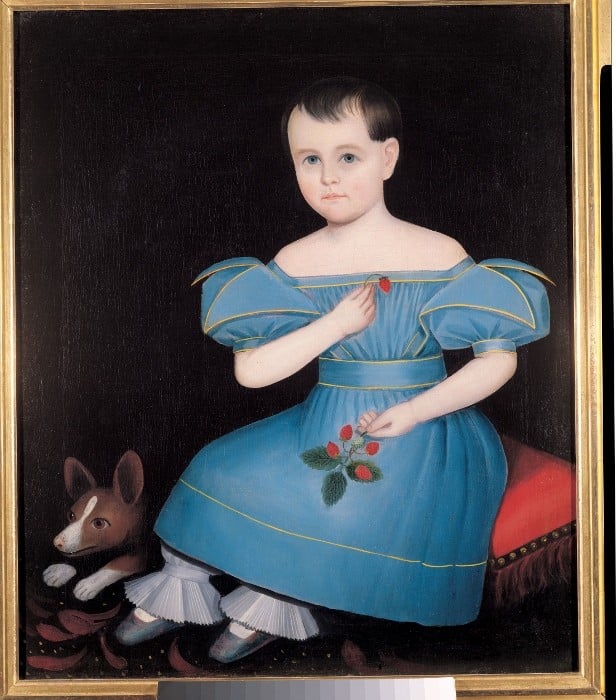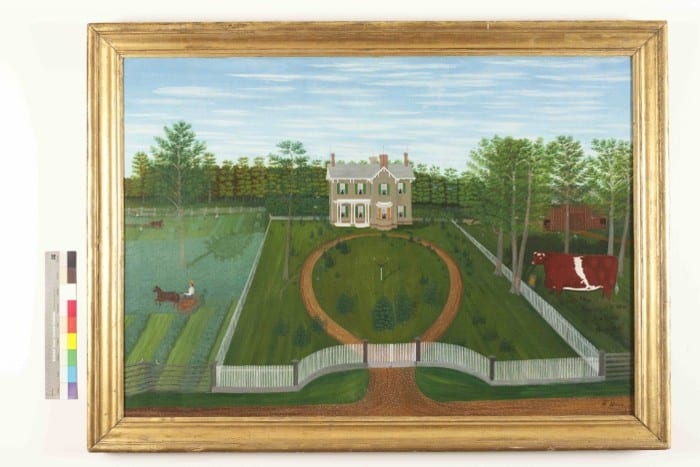By May Zhee Lim, Markets Media Life Correspondent
More than sixty artworks of historical and artistic significance are now on display at the American Folk Art Museum. “A Shared Legacy: Folk Art in America” features portraits, still-life, landscape, and allegorical paintings, commercial and highly personal sculptures, and distinctive examples of furniture made between 1800 and 1920.

James Mairs Salisbury Attributed to Ammi Phillips (1788–1865) Catskill, New York c. 1835 Oil on canvas 32 x 27″ (39 11/16 x 34 5/8 x 3 1/8″ with frame) Photo courtesy of the Barbara L. Gordon Collection
These unique works were made by self-taught artists primarily in rural areas of New England, the Midwest, and the South, away from artistic models established in East Coast cities. Nonetheless, these artists conveyed news of importance to public attention and contributed to the American visual identity in the early years of nationhood. Today, these pieces are prized not just for aesthetic excellence but also for their first-person perspective of little-known moments in America.

The Farm of Henry Windle, Henry Dousa (1837–after 1903) Washington Court House, Ohio 1875
Oil on canvas
31 1/4 x 48″ (39 3/4 x 54 x 2 1/2″ with frame)
Photo courtesy of the Barbara L. Gordon Collection
The rise of America’s middle class and the emerging consumer culture can be gleaned in many of the portraits. Other subjects explored in painting are the anti-Irish Catholic sentiment of early 1800s and the fascination with steamboats of the era. Personal events and experiences were documented alongside moments of national importance. Taken together, the artworks in “A Shared Legacy” capture a changing America as well as the artist’s and viewer’s relationship to a shared past.
Admission to the American Folk Art Museum is free.

